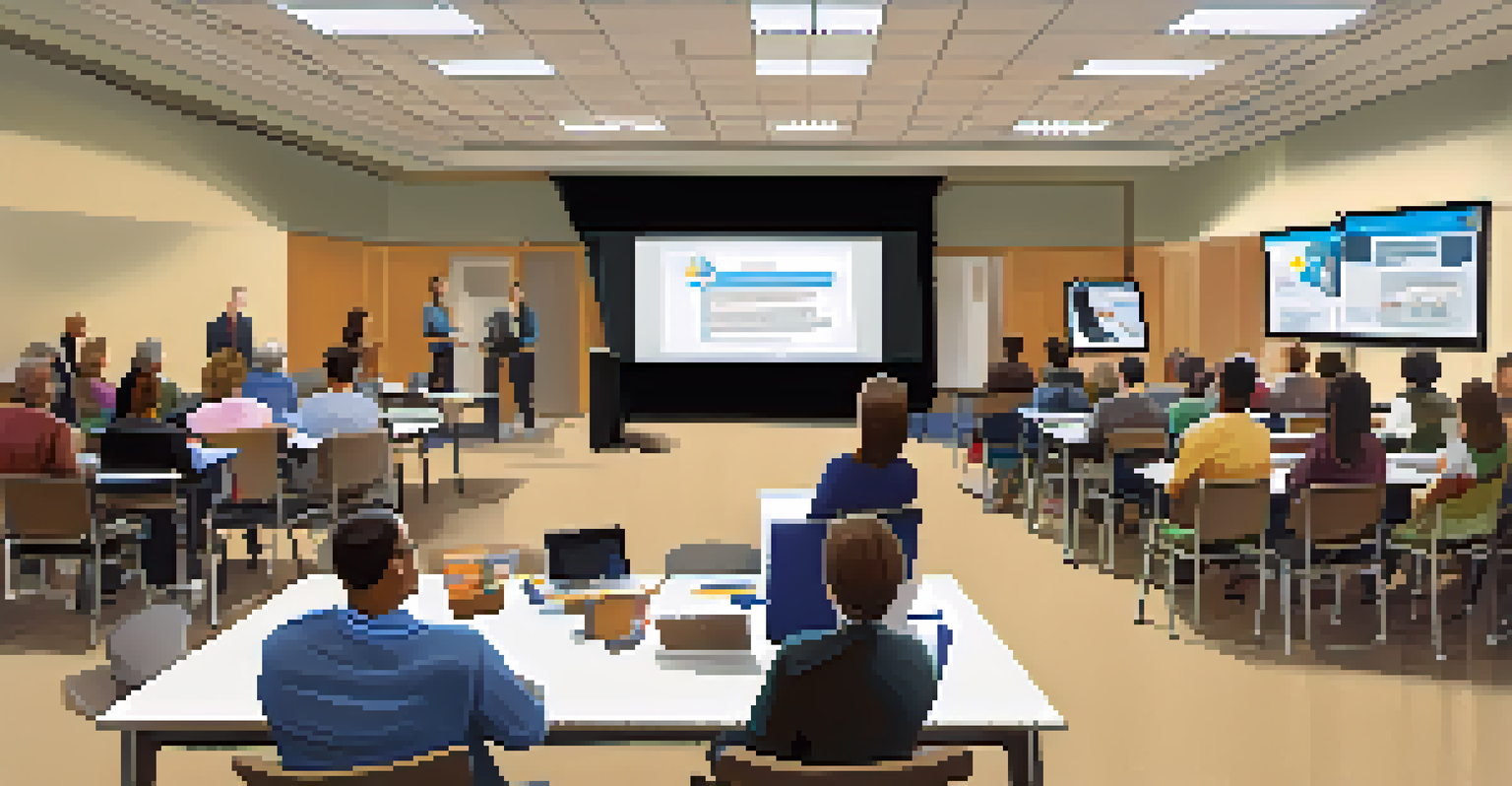Evaluating the Impact of Digital Resources on Learning Equity

Understanding Learning Equity in the Digital Age
Learning equity refers to providing all learners with equal access to educational resources, regardless of their background. In today's digital age, this concept takes on new dimensions, as technology can either bridge or widen gaps in access to quality education. The rise of digital resources has the potential to democratize learning, making it accessible to a broader audience.
Education is the most powerful weapon which you can use to change the world.
However, the actual impact of these resources varies significantly based on factors like socioeconomic status, geographic location, and digital literacy. For instance, a student in a well-resourced urban area may have seamless access to online courses, while a rural student might struggle with connectivity issues. These disparities highlight the importance of not just introducing technology but ensuring it serves all learners equitably.
To truly evaluate learning equity, we must consider both the availability of digital resources and the capability of learners to utilize them. This dual focus helps us understand how digital tools can either empower or hinder the educational experiences of diverse student populations.
The Role of Digital Resources in Enhancing Access
Digital resources, such as online courses, e-books, and educational apps, can significantly enhance access to learning materials. They offer flexibility, allowing students to learn at their own pace and revisit complex topics as needed. For example, a student struggling with a particular math concept can find numerous tutorials online, catering to different learning styles and preferences.

Moreover, these resources can break geographical barriers, allowing learners from remote areas to access high-quality content that was previously unavailable. This kind of access can be life-changing, especially for those who may not have local alternatives. Imagine a student in a small town gaining insights from world-renowned experts through online lectures.
Learning Equity Requires Access
Ensuring all learners have equal access to educational resources is essential, especially in the digital age.
However, while access is crucial, it is just the first step. To foster true learning equity, we need to ensure that all students have the necessary support to effectively engage with these digital resources, including guidance from educators and access to devices.
Digital Literacy: A Critical Component for Equity
Digital literacy is the ability to find, evaluate, and use information effectively online. It's a crucial skill for navigating the vast array of digital resources available today. Unfortunately, not all students come to the table with the same level of digital literacy, which can create disparities in educational outcomes.
Technology is best when it brings people together.
For instance, a tech-savvy student may excel in an online learning environment, while another who lacks skills in this area may feel overwhelmed or disengaged. This highlights the importance of integrating digital literacy training into the curriculum, ensuring that all students can confidently use online resources.
Incorporating digital literacy into education not only empowers students but also fosters a culture of lifelong learning. As technology continues to evolve, those equipped with strong digital skills are better prepared to adapt and thrive in an increasingly digital world.
Barriers to Accessing Digital Resources
Despite the potential benefits, many students face significant barriers when trying to access digital resources. These can include lack of reliable internet access, inadequate technology, and even financial constraints. For instance, a student without a personal laptop may struggle to complete assignments that require online research.
Additionally, some households may prioritize other expenses over technology, limiting students' access to educational tools. These barriers can lead to a sense of frustration and hopelessness, which can ultimately impact their academic performance. It’s essential to identify these challenges and work towards solutions that provide all students with the resources they need.
Digital Literacy is Essential
Students must possess digital literacy skills to effectively engage with online resources and succeed academically.
Addressing these barriers requires collaboration among educators, policymakers, and communities. By working together, we can create initiatives that provide devices, improve internet access, and support families in navigating the digital landscape.
The Impact of Teacher Training on Resource Utilization
Teachers play a vital role in how digital resources are utilized in the classroom. Their comfort level with technology greatly influences students' engagement and success with these tools. For example, a teacher who is confident in using online platforms can create interactive lessons that captivate students and enhance their learning experiences.
Conversely, a lack of training can lead to underutilization of available resources, preventing students from reaping the full benefits of technology. Therefore, it’s crucial for educational institutions to invest in ongoing professional development for teachers, ensuring they are equipped to effectively integrate digital tools into their teaching.
By empowering educators with the skills and knowledge they need, we can create an environment where all students can thrive. This support not only enhances the learning experience but also models for students the importance of continuous learning.
Evaluating the Effectiveness of Digital Resources
To assess the impact of digital resources on learning equity, we must evaluate their effectiveness systematically. This involves collecting data on student engagement, achievement, and overall satisfaction with digital tools. For instance, surveys and assessments can help gauge how well students are connecting with the material and whether they feel supported in their learning.
Additionally, educators can analyze performance trends over time to determine if digital resources are making a positive difference in student outcomes. This continuous evaluation process allows for timely adjustments, ensuring that resources meet the evolving needs of learners.
Collaborative Solutions Needed
Addressing barriers to digital resource access calls for collaboration among educators, policymakers, and communities.
Ultimately, the goal is to create a feedback loop where insights gathered from evaluations inform future resource development. By doing so, we can enhance the educational experience for all students and work toward achieving true learning equity.
Future Directions for Learning Equity and Digital Resources
Looking ahead, it's clear that the conversation around digital resources and learning equity must evolve. As technology continues to advance, new opportunities will emerge for enhancing educational access and equity. For instance, the rise of artificial intelligence and personalized learning platforms could provide tailored educational experiences that meet individual student needs.
However, these advancements also come with their own set of challenges, including ethical considerations and the need for inclusive design. It’s essential to ensure that new technologies do not inadvertently widen existing gaps but instead serve to bridge them. This calls for ongoing dialogue among educators, technologists, and policymakers.

By prioritizing collaboration and equity in the development of digital resources, we can pave the way for a more inclusive educational landscape. The aim is to create a future where every learner, regardless of their background, has the tools and opportunities to succeed.